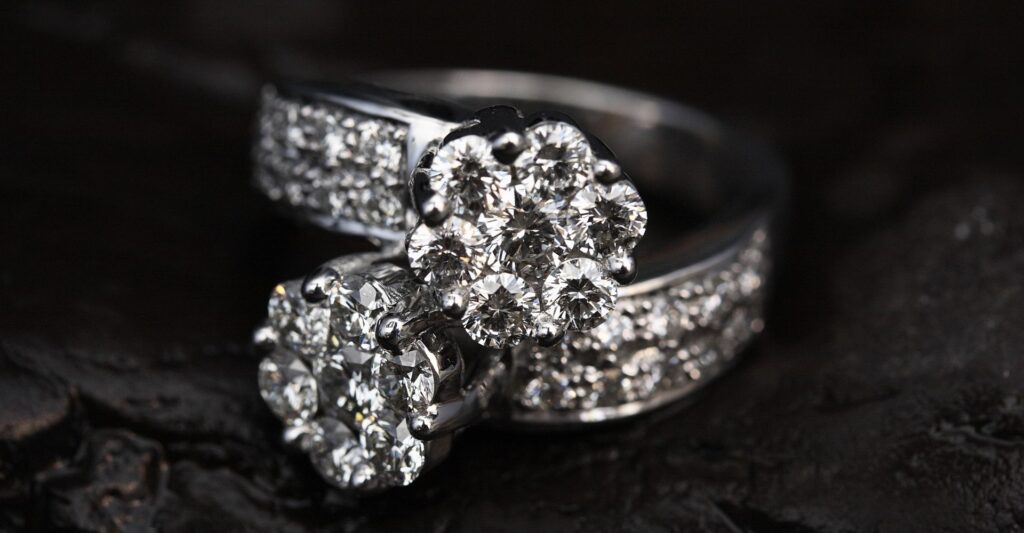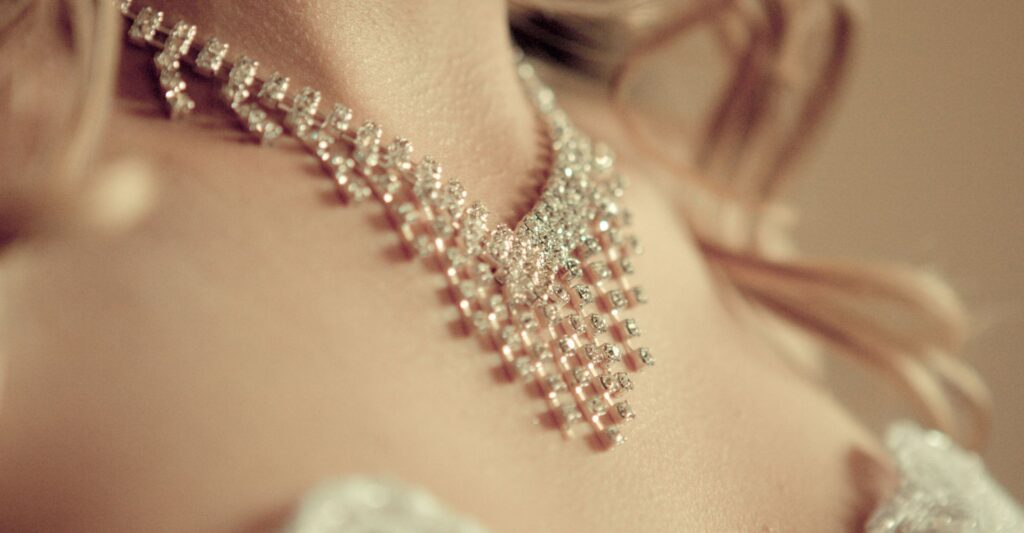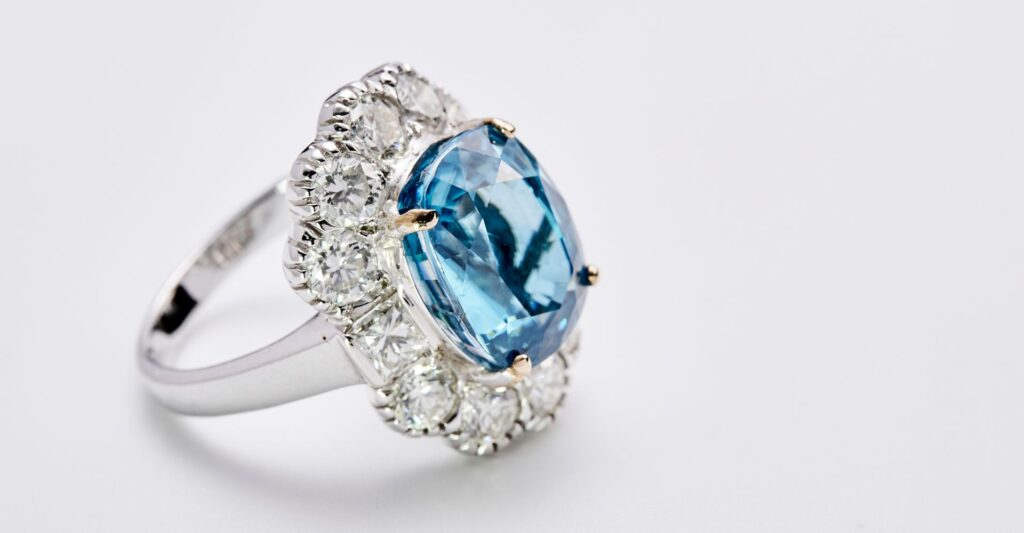In the glittering world of social media, the sparkle of your jewelry photos can make or break your online presence. Whether you’re a jewelry designer, a retailer, or just someone who loves sharing their collection, stunning jewelry photos are essential to grab attention and engage your audience. But how do you make your jewelry images stand out? The secret lies in the art of jewelry retouching.
Understanding Jewelry Retouching
Definition and Purpose
Jewelry retouching is the process of enhancing jewelry images to make them look their best. This involves a range of techniques aimed at removing imperfections, adjusting lighting, enhancing details, and much more. The goal is to present your jewelry in the most appealing way possible, ensuring it catches the eye of potential customers or admirers.
Common Retouching Techniques for Jewelry
Some of the most common retouching techniques include blemish removal, color correction, sharpening, and detail enhancement. These methods help in making the jewelry appear flawless, vibrant, and true to life, which is crucial for convincing your audience of its quality and beauty.

Tools and Software for Jewelry Retouching
Best Software for Retouching Jewelry Photos
When it comes to jewelry retouching, the right software can make a significant difference. Adobe Photoshop and Lightroom are among the top choices due to their comprehensive set of tools and features tailored for detailed image editing. Other popular options include GIMP, Affinity Photo, and specialized jewelry retouching software like JewelPix.
Essential Tools and Features
Key tools for jewelry retouching include the clone stamp, healing brush, and dodge & burn tools in Photoshop. These allow you to precisely remove imperfections, enhance specific areas, and adjust light and shadow for a polished finish. Layer masks and adjustment layers are also invaluable for non-destructive editing, giving you flexibility and control over your retouching process.
Preparing Your Jewelry Photos for Retouching
Importance of High-Quality Raw Images
The foundation of effective retouching starts with high-quality raw images. Ensure your photos are taken in a high resolution with proper lighting and focus. This provides a solid base to work from and makes the retouching process smoother and more efficient.
Setting Up the Perfect Shoot
A well-planned photoshoot is crucial for capturing the best possible images. Use a clean, uncluttered background, preferably white or a neutral color, to make the jewelry stand out. Proper lighting is essential—use soft, diffused light to avoid harsh shadows and highlights. A macro lens can help capture the intricate details of the jewelry.
Basic Retouching Techniques
Removing Blemishes and Imperfections
Start with removing any dust, scratches, or minor flaws that can distract from the beauty of the jewelry. Tools like the healing brush and clone stamp in Photoshop are perfect for this task. Work carefully to ensure these corrections blend seamlessly with the rest of the image.
Adjusting Lighting and Shadows
Next, adjust the lighting and shadows to create a balanced, appealing image. Use the dodge and burn tools to add depth and dimension, enhancing the natural contours of the jewelry. This step is key to making your jewelry look three-dimensional and lifelike.

Advanced Retouching Techniques
Enhancing Gemstones and Metals
To make gemstones and metals pop, enhance their natural characteristics. Increase the clarity and contrast of gemstones to highlight their facets and sparkle. For metals, adjust the highlights and reflections to bring out their shine and texture.
Creating Sparkle and Shine
Adding sparkle and shine can transform a dull photo into a dazzling one. Use the dodge tool to brighten areas where light naturally hits, and add subtle lens flares or light reflections for an extra touch of glamour. Be cautious not to overdo it—keeping it realistic is key.
Color Correction and Adjustment
Balancing Colors for Realistic Effects
Accurate color representation is crucial in jewelry photography. Use color correction tools to ensure the colors of the metals and gemstones are true to life. This might involve adjusting white balance, saturation, and hue to match the actual appearance of the jewelry.
Adjusting Saturation and Hue
Fine-tune the saturation and hue to enhance the overall look without making it appear artificial. This step helps in making the colors more vibrant and appealing, catching the viewer’s eye instantly.
Sharpening and Detail Enhancement
Techniques for Sharpness
Sharpening is vital to bring out the fine details in your jewelry photos. Use tools like the unsharp mask or high-pass filter in Photoshop to enhance the edges and details without introducing noise or artifacts.
Bringing Out Fine Details
Enhancing fine details can make a big difference in how your jewelry is perceived. Focus on the intricate designs, engravings, and textures that make each piece unique. Detail enhancement can be achieved through careful use of sharpening tools and contrast adjustments.

Background and Environment Adjustments
Choosing the Right Background
The background plays a significant role in how your jewelry is perceived. Choose a background that complements the jewelry without distracting from it. Simple, clean backgrounds are often the best choice, but you can also experiment with textured or colored backgrounds for a unique look.
Removing Unwanted Elements
Ensure the background is free from distractions or unwanted elements. Use tools like the clone stamp or content-aware fill to remove any blemishes or objects that detract from the focus on the jewelry.
Maintaining Natural Look
Avoiding Over-Retouching
While retouching is essential, it’s important not to overdo it. Over-retouching can make the jewelry look unnatural and unappealing. Strive for a balance that enhances the jewelry’s features while maintaining a realistic appearance.
Tips for Keeping It Realistic
Keep your edits subtle and natural. Focus on enhancing what’s already there rather than creating an entirely new look. This approach ensures that your photos remain authentic and true to the actual appearance of the jewelry.
Using Retouched Photos on Social Media
Best Practices for Social Media Platforms
Each social media platform has its own set of best practices for image posts. For Instagram, use high-resolution images and take advantage of the platform’s editing tools to further enhance your photos. On Pinterest, create eye-catching pins with vibrant colors and clear, detailed images.
Optimizing Images for Different Platforms
Optimize your images for the specific requirements of each platform. This includes resizing images to the appropriate dimensions and ensuring they load quickly. High-quality, optimized images will perform better and attract more engagement.
Trends in Jewelry Photography and Retouching
Current Trends to Follow
Stay updated with the latest trends in jewelry photography and retouching. This might include styles like minimalism, vintage looks, or bold, vibrant colors. Following trends can help keep your photos fresh and relevant.
How Trends Impact Your Photos
Incorporating current trends can make your photos more appealing to your audience. However, always ensure that trends align with your brand’s style and the jewelry’s aesthetic. The goal is to enhance your photos while staying true to your brand.

Case Studies and Examples
Before and After Retouching Examples
Showcasing before and after examples can highlight the impact of retouching. Displaying the transformation can illustrate the effectiveness of your retouching techniques and the potential of your jewelry photos.
Analysis of Successful Jewelry Photos
Analyze successful jewelry photos to understand what makes them stand out. Look at the composition, lighting, retouching techniques, and how they are presented on social media. Learning from successful examples can inspire and improve your own work.
Tips from Professional Retouchers
Expert Advice and Insights
Seek advice and insights from professional retouchers who specialize in jewelry photography. Their expertise can provide valuable tips and tricks to elevate your retouching skills.
Common Mistakes to Avoid
Avoid common mistakes such as over-retouching, poor color correction, and ignoring the importance of a good quality raw image. Learning from these mistakes can save you time and improve the quality of your retouching work.
Conclusion
Jewelry retouching is an essential skill for anyone looking to make their photos stand out on social media. By understanding the techniques, tools, and best practices, you can transform your jewelry photos into stunning, eye-catching images that captivate your audience. Remember to keep your edits subtle and realistic, and always strive for high-quality, polished results.
FAQs
What is the best software for jewelry retouching?
Adobe Photoshop is widely considered the best software for jewelry retouching due to its powerful tools and features tailored for detailed editing.
How long does it take to retouch a jewelry photo?
The time it takes to retouch a jewelry photo can vary depending on the complexity of the image and the level of detail required. On average, it can take anywhere from 30 minutes to several hours.
Can I retouch jewelry photos on my smartphone?
Yes, there are several apps available for smartphones that offer basic retouching capabilities, such as Adobe Lightroom Mobile and Snapseed. However, for more advanced retouching, desktop software like Photoshop is recommended.
What are the common mistakes in jewelry retouching?
Common mistakes include over-retouching, poor color correction, and neglecting the importance of a high-quality raw image. These can result in unnatural-looking photos that fail to engage viewers.
How do I keep my jewelry photos looking natural after retouching?
To keep your jewelry photos looking natural, focus on subtle enhancements rather than dramatic changes. Ensure that colors are true to life, and avoid over-sharpening or excessive use of filters.






